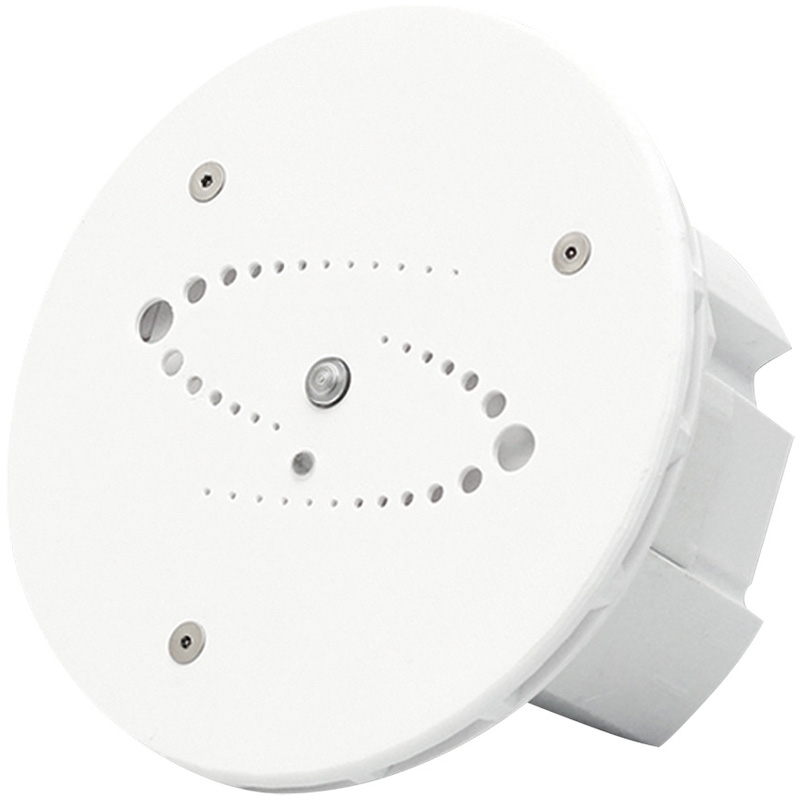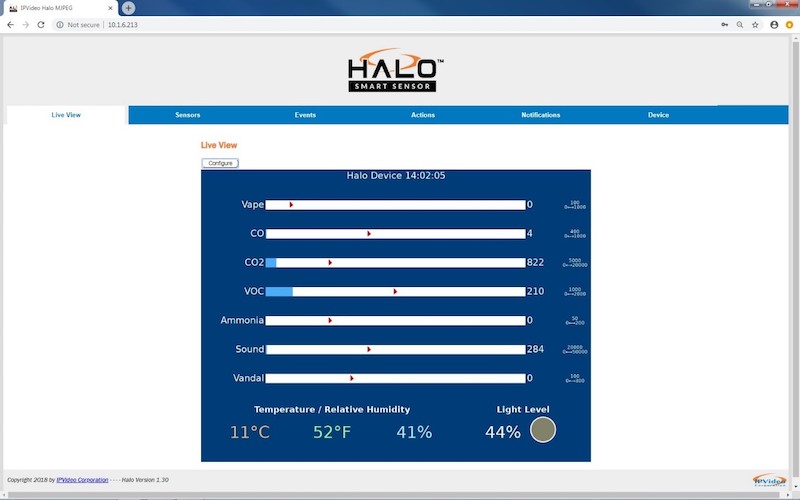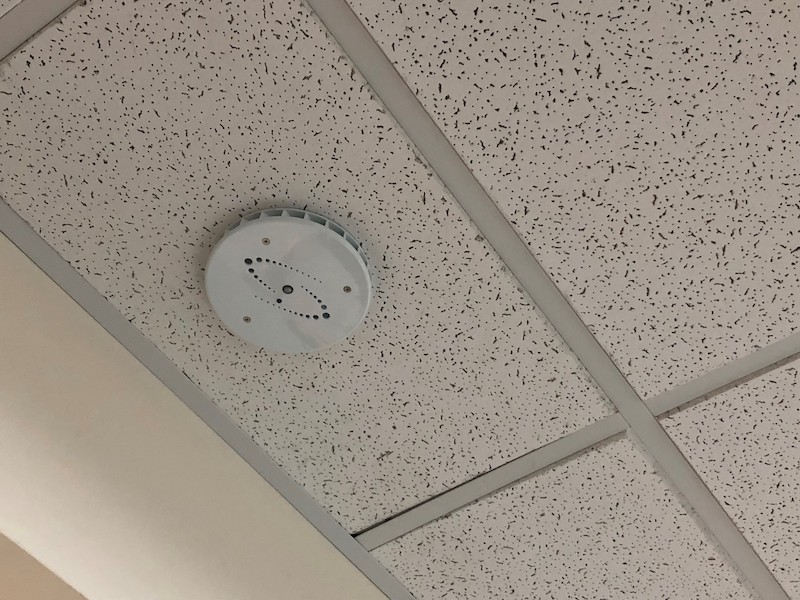Privacy concerns have become an everyday part of life for most people, especially in big cities and heavily populated areas. It seems like the moment someone ventures out of their home or workplace, they become the star of their very own “Truman Show,” thanks to the abundance of security cameras and sensors monitoring every move they make.
While some argue these cameras are an invasion of privacy, they have also proven to be invaluable in catching crimes where the culprit would otherwise get off scot-free.
But even in today’s world, there are still some places where cameras are not welcome: bathrooms, locker rooms, hotel rooms, patient rooms, senior housing units, and residential units. In the delicate balance between safety and privacy, spaces like these have always leaned more toward remaining private at the risk of extra security. But a new smart sensor from IPVideo Corporation looks to maintain privacy while also increasing the safety of these personal spaces.

The HALO IOT Smart Sensor has multiple sensors to monitor audio analytics, air quality, chemicals, light, and environmental factors without the use of a camera.
The audio analytics include gunshot detection, glass breakage, shouting, excessive banging, and bullying. Air quality sensors can detect vape, THC, smoke, formaldehyde, benzene, and VOCs. The HALO’s chemical sensors can detect ammonia, oxidizers, methane, propane, natural gas, carbon monoxide, carbon dioxide, and glues, while the light and environmental sensors track things like occupancy, temperature, humidity, and pressure.
See Also: Raising the roof is cool again
“When we designed HALO it was intended for limited applications doing vape detection and audio analytics for school construction projects,” says Jack Plunkett, Chief Technology Officer, IPVideo. “It has now evolved into an unlimited number of construction use cases.”

HALO has 11 built-in sensors that utilize advanced analytics to adjust and maximize the settings for the specific room. For example, a HALO sensor in a locker room can be adjusted for that space to get fewer false alarms from body sprays and disinfectant sprays. It connects directly to a security monitor and VMS and, because it is a security product and not a Web app, there are no annual cloud fees. When a sensor detects something out of the ordinary, an alert is sent via email or text message and digital alerts are sent via video management.
The sensor has an operating temperature between 32 F and 122 F and zero to 90% relative humidity. It is 3.1x5.8 inches. Mounting options: ceiling flush or surface mount.
Related Stories
AEC Tech | Feb 20, 2024
AI for construction: What kind of tool can artificial intelligence become for AEC teams?
Avoiding the hype and gathering good data are half the battle toward making artificial intelligence tools useful for performing design, operational, and jobsite tasks.
Sustainability | Nov 1, 2023
Researchers create building air leakage detection system using a camera in real time
Researchers at the U.S. Department of Energy’s Oak Ridge National Laboratory have developed a system that uses a camera to detect air leakage from buildings in real time.
75 Top Building Products | Aug 7, 2023
Enter today! BD+C's 75 Top Building Products for 2023
BD+C editors are now accepting submissions for the annual 75 Top Building Products awards. The winners will be featured in the November/December 2023 issue of Building Design+Construction.
Resiliency | Aug 7, 2023
Creative ways cities are seeking to beat urban heat gain
As temperatures in many areas hit record highs this summer, cities around the world are turning to creative solutions to cope with the heat. Here are several creative ways cities are seeking to beat urban heat gain.
AEC Innovators | Jun 15, 2023
Rogers-O'Brien Construction pilots wearables to reduce heat-related injuries on jobsites
Rogers-O'Brien Construction (RO) has launched a pilot program utilizing SafeGuard, a safety-as-a-service platform for real-time health and safety risk assessment. Non-invasive wearables connected to SafeGuard continuously monitor personnel to prevent heat exhaustion on jobsites, reducing the risk of related injuries. RO is the first general contractor to pilot this program.
Office Buildings | May 15, 2023
Sixteen-story office tower will use 40% less energy than an average NYC office building
This month marks the completion of a new 16-story office tower that is being promoted as New York City’s most sustainable office structure. That boast is backed by an innovative HVAC system that features geothermal wells, dedicated outdoor air system (DOAS) units, radiant heating and cooling, and a sophisticated control system to ensure that the elements work optimally together.
Design Innovation Report | Apr 27, 2023
BD+C's 2023 Design Innovation Report
Building Design+Construction’s Design Innovation Report presents projects, spaces, and initiatives—and the AEC professionals behind them—that push the boundaries of building design. This year, we feature four novel projects and one building science innovation.
Design Innovation Report | Apr 19, 2023
Reinforced concrete walls and fins stiffen and shade the National Bank of Kuwait skyscraper
When the National Bank of Kuwait first conceived its new headquarters more than a decade ago, it wanted to make a statement about passive design with a soaring tower that could withstand the extreme heat of Kuwait City, the country’s desert capital.
Design Innovation Report | Apr 19, 2023
HDR uses artificial intelligence tools to help design a vital health clinic in India
Architects from HDR worked pro bono with iKure, a technology-centric healthcare provider, to build a healthcare clinic in rural India.
3D Printing | Apr 11, 2023
University of Michigan’s DART Laboratory unveils Shell Wall—a concrete wall that’s lightweight and freeform 3D printed
The University of Michigan’s DART Laboratory has unveiled a new product called Shell Wall—which the organization describes as the first lightweight, freeform 3D printed and structurally reinforced concrete wall. The innovative product leverages DART Laboratory’s research and development on the use of 3D-printing technology to build structures that require less concrete.

















